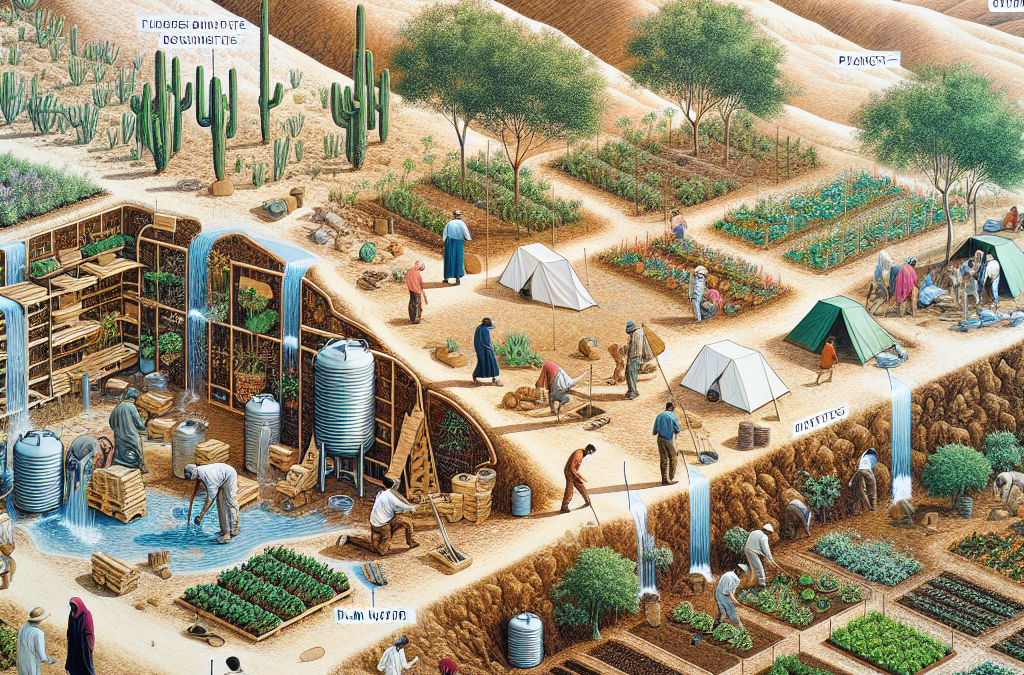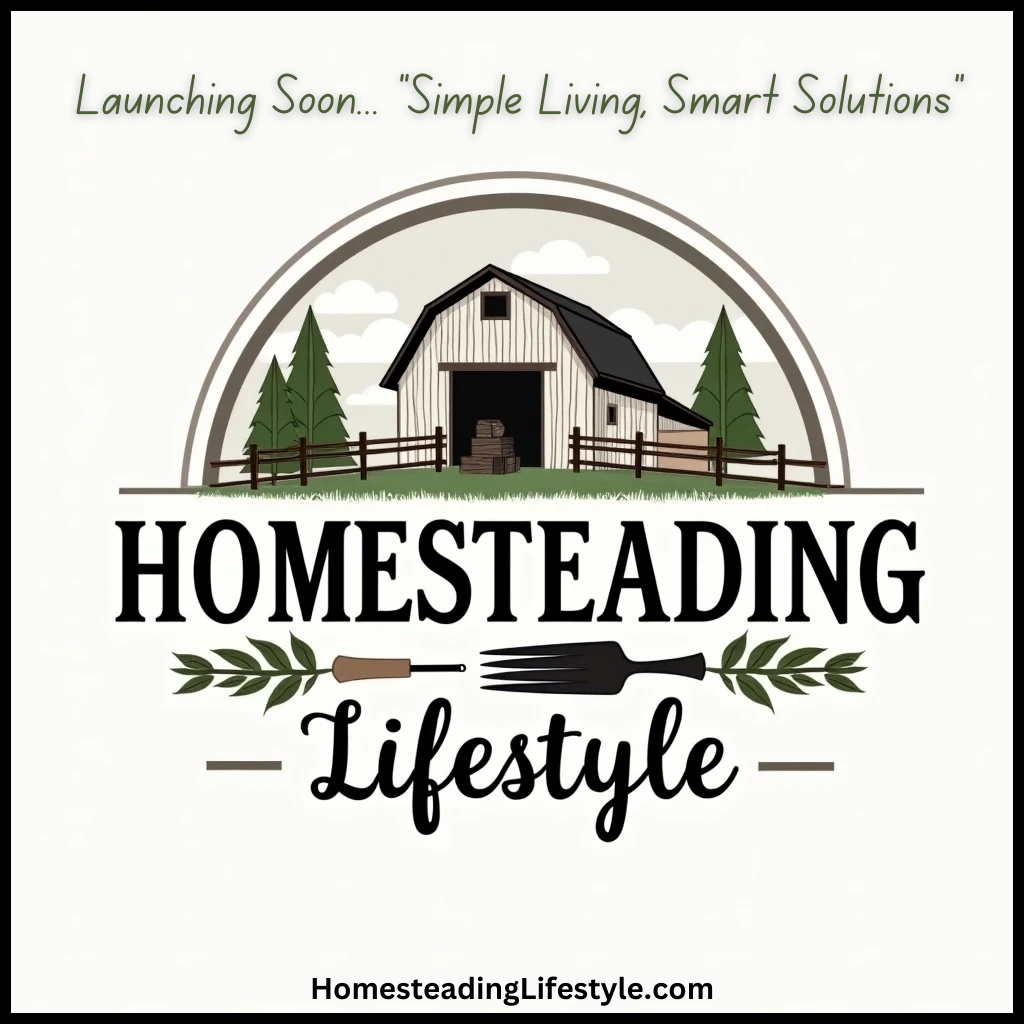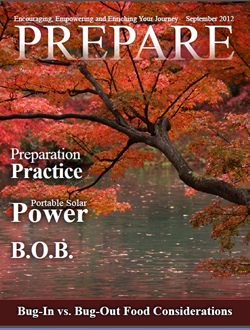1. Choosing the Right Location
Understanding the Climate
When I first decided to venture into homesteading, the climate was a huge consideration. In arid regions, rainfall can be scarce, and temperatures can swing dramatically. I learned to look at historical climate data to understand what I was signing up for. It’s simple—knowing when the wet and dry seasons occur can help you make better decisions about planting and water collection.
Also, I quickly realized that not all arid areas are created equal. Some areas have sandy soils that drain quickly, while others have clay that can hold moisture. So, digging a little into the soil types can save you a lot of headaches later on!
Last but not least, consider the local flora and fauna. Are there native plants that thrive despite the heat? Do some animals, like rabbits or deer, frequently nap around? Taking note of these details can help you create a more harmonious homestead.
Assessing Water Sources
Water is everything in arid climates, right? I mean, without it, the plants just won’t survive. The first thing I did was survey the area for water sources. Is there a river nearby, a pond, or even a spring? In my case, I discovered an underground aquifer that I could tap into—score!
Then, I focused on collecting rainwater, as even a few inches can make a difference. I installed a few rain barrels to capture runoff from the roof. Trust me, keeping an eye on the rainfall can be immensely gratifying, especially when you see those barrels filling up!
Lastly, don’t forget about efficiency. Implementing systems like drip irrigation can save water and direct it right to the roots of your plants. It’s all about being smart with what you’ve got!
Evaluating Accessibility
Accessibility is crucial when homesteading. In my excitement, I almost overlooked this aspect! Make sure your property is accessible both for you and essential deliveries. Consider how often you’ll be traveling to town for supplies. If your road turns to dust in the summer or mud in the winter, you might find yourself stuck.
I found that a solid road base could make a world of difference. Plus, having a decent driveway means you can have friends over or even get that tractor delivered without worry. Don’t underestimate the importance of being able to get in and out easily!
Also, think about how far away you are from emergency services. It’s not something I thought about too much initially, but after a couple of near mishaps, I realized that I wanted to be within a reasonable distance from help if needed.
2. Designing Your Homestead Layout
Optimizing for Sunlight and Wind
Your layout should consider how the sun and wind interact on your land. I spent a summer watching how shadows moved and where the wind flowed. It’s amazing how much this knowledge can affect crop and plant placement. You want your garden to get as much sun as possible while also providing some shaded areas for certain plants.
Windbreaks can also be life-changers. I planted some native bushes along the windward side of my property; this not only protected my crops but also created a microclimate where plants thrived.
Even considering structures like sheds or greenhouses—position them wisely to maximize energy efficiency! I even learned a few tricks from my neighbor, who’d been at this for years. It’s all about trial and error, folks.
Crop Rotation Planning
So, crop rotation is a game changer. Once I started doing this, I saw improvements in soil health and productivity. I always keep my eyes peeled for what plants complement each other; some help retain moisture while others might need more of it!
In arid zones, I began with crops like squash and beans that can thrive while enriching the soil. Plus, rotating plants like this reduces pests, and that is a win-win!
Make a simple plan for your growing seasons. I created a spreadsheet of sorts, mapping it out season by season. Sure, it may seem overkill, but trust me, once you see the fruits of your labor (literally!), you’ll be glad you thought ahead.
Layout for Livestock
If you’re planning on including livestock, plan their area wisely! Depending on space and layout, you’ll want to decide where to place chicken coops, goat pens, or even larger animals like cows. In my experience, I knew it was crucial to keep a safe distance between crops and animals; this way they can coexist without issues.
Also, think about water accessibility for them. Position it so that it’s easy for you to refill it but also close enough for them to hydrate comfortably. Set up a windbreak too, as livestock can be sensitive to weather changes.
Lastly, don’t neglect rotating grazing areas. This helps preserve grasslands and keeps your animals healthy. I learned this one the hard way—together with a bit of help from my local cooperative, it made a big difference.
3. Soil Preparation and Improvement
Testing Soil Health
Before planting anything, I figured it was smart to test the soil. Seriously, just because it looks good doesn’t mean it is. There are DIY kits you can buy or even local services that will analyze your soil for you.
Based on my testing, I found it low in several nutrients, so I knew it was time to amend those levels. Organic compost became my best friend. Not only does it enrich the soil, but it also helps retain moisture—a must in an arid climate!
Also, consider the pH levels. Some plants thrive in slightly acidic or alkaline soil, so knowing this can guide what you decide to plant and where. It’s all about giving your plants the best shot at life!
Amending Your Soil
Once I received my soil test results, it was time to amend! I started adding compost, wood chips, and even some natural fertilizers. Honestly, I went a bit wild at the local feed store picking up everything to bring my soil back to life.
Mulching became essential for me. Not only does it retain moisture but it also suppresses weeds—two birds with one stone! Plus, it just feels good knowing I’m doing something beneficial.
Over time, I built up my soil health, and the rewards were huge—plants grew taller and healthier, and the garden became a stunning showcase that I couldn’t help but brag about to my friends.
Implementing Contour Farming
Contour farming was a game changer for me, particularly in helping mitigate soil erosion. Shaping the land in rows that follow the land’s contours slowed down water runoff and helped retain what little rain we got.
I also created small swales to capture more rainwater. These little ditches not only kept the moisture but often became a home for various plants and beneficial wildlife.
Over time, I was amazed at how much more productive and resilient my crops became just from this simple adjustment in my farming approach. It’s like I unlocked a secret to thriving in the harsh climate!
4. Water Conservation Techniques
Rainwater Harvesting Systems
After a few dry spells, I knew water conservation had to be a priority. Installing a rainwater collection system was a no-brainer for me. I set up some barrels to collect runoff from my roof, and wow—what a difference that made!
I also got a little crafty and installed a drip irrigation system. This allows water to drip slowly to the roots, minimizing evaporation. It felt good knowing that I was using water more efficiently!
On top of that, planting drought-resistant plants made a big impact—these beauties need minimal watering and still provide a bounty of produce. Plus, they really started to thrive alongside my other crops.
Mulching Techniques
Mulch became my hero pretty quickly! I learned that it can significantly reduce soil moisture evaporation. Just a few inches can protect the soil and keep roots cool, especially during those scorching summer days.
I used straw, grass clippings, and even shredded leaves, which I felt great about since I was recycling organic materials. It’s kind of therapeutic too, just getting your hands dirty and working with nature.
Again, I found that my plants flourished under the protective blanket of mulch. It illustrated firsthand just how much a little variation in the details can yield huge benefits!
Climate-Adaptive Planting
This is where my knowledge of local plants really paid off. I started selecting varieties that were better adapted to the arid conditions. Certain crops thrive on less water and can withstand the heat without flinching. I cultivated a love for native plants—they’re just so much more suited to handle the quirks of the environment!
Trial and error is inevitable. I’ve lost a few battles with some plants that just didn’t quite make the cut for this climate, but I took every loss as a chance to learn and improve. Each season, I became better at predicting what would flourish and what would falter.
Now, I’m constantly amazed at how my garden thrives with these better-suited varieties. It really takes a weight off your shoulders when you see how well they adapt with the right attention!
5. Building Community Connections
Finding Local Resources
When I first got started, I thought I’d have to go it alone, but boy, was I wrong! Finding local resources made all the difference. There are usually small businesses, co-ops, and local farms nearby that can help you get what you need.
I stumbled upon a local gardening club that meets regularly, sharing tips and tricks. Honestly, it felt so great to be surrounded by people who are just as passionate about homesteading as I am.
Don’t forget to check out community events too! I’ve found everything from plant swaps to local farmer markets, which made building my garden and gathering knowledge a lot more fun.
Joining Online Communities
Even in this digital era, online communities can play a crucial role. I found Facebook groups and forums that connected me to fellow homesteaders. From exchanging advice to sharing failures and successes, it’s a remarkable way to learn!
Don’t shy away from asking questions. I’ve posted numerous queries and received fantastic feedback from others who know the struggles of homesteading in tough climates. The sense of camaraderie is wonderful!
Plus, many online communities host webinars and workshops, which have helped keep me informed about new trends or techniques to try. Trust me, you don’t have to reinvent the wheel—others have been where you are!
Networking with Neighbors
Getting to know my neighbors was an unexpected delight. Many had been homesteading far longer than I had, and they were more than willing to share their wisdom and insights. I couldn’t believe how eager they were to help out my rookie self!
Exchanging goods and services became a norm. For instance, I’d lend a hand during their harvest, and they’d teach me how to can. Being part of the community means you have people watching your back in times of crisis too—it’s honestly priceless!
Remember, you never know what connections may lead to amazing opportunities, be it loaning a tool or pitching ideas for collaboration. Homesteading isn’t just about land; it’s about building a network of support.
FAQ
1. What are the best crops to grow in arid climates?
Some of the best crops for arid climates include drought-resistant varieties like squash, beans, tomatoes, and various herbs. Understanding local plant life can help enhance your garden overall!
2. How can I save water when gardening?
Rainwater harvesting, using mulch, and installing drip irrigation systems can drastically reduce water usage while keeping plants healthy. Efficient watering is key!
3. Why is crop rotation important?
Crop rotation can improve soil health, reduce pest issues, and increase productivity. Different plants have different nutrient needs, so varying your crops helps maintain balance.
4. How can I improve soil quality?
Adding organic matter like compost, testing pH, and implementing contour farming techniques are all effective ways to enhance soil health and retain moisture.
5. What should I look for when choosing a location for homesteading?
When picking a spot, consider climate conditions, water access, soil type, and whether it fits your needs for accessibility. These factors will shape how successful your homestead can be!





